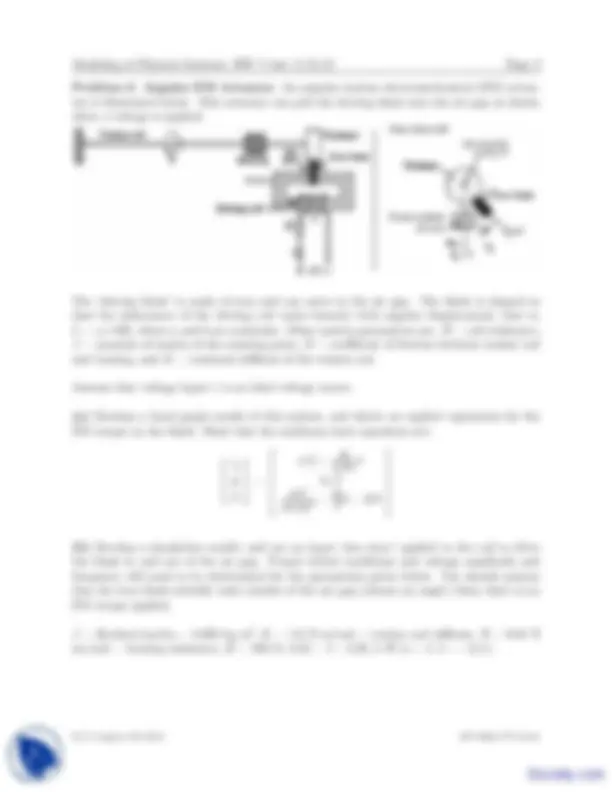



Study with the several resources on Docsity

Earn points by helping other students or get them with a premium plan


Prepare for your exams
Study with the several resources on Docsity

Earn points to download
Earn points by helping other students or get them with a premium plan
Community
Ask the community for help and clear up your study doubts
Discover the best universities in your country according to Docsity users
Free resources
Download our free guides on studying techniques, anxiety management strategies, and thesis advice from Docsity tutors
The main points in the home work assignment of the Modeling of Physical Systems are:Stabilized Two, Sliding, Depending, Introduces, System, Initial Translational Velocity, Parameters, Ow Sources, Equations, System
Typology: Exercises
1 / 3

This page cannot be seen from the preview
Don't miss anything!


Problem 1: The child’s toy shown below is referred to as “magic man” because the body of the clown straddles the rolling ball and is stabilized by a counter-mass, ms. The conceptual schematic provided illustrates how this system may be realized. For the purposes of this exercise, assume all motion is constrained to the x − z plane, even though in reality there is usually some yaw motion (rotation about z). The angular motion of the body about the y axis is quantified by the angle θ.
When the ball rolls on the ground, there is an induced rolling resistance modeled by the relation, Fr = frW , where fr is a dimensionless rolling resistance coefficient and W is the effective contact force. This force is applied in the x direction and always opposes motion of the body. It is also necessary to model sliding between the ball and the ground, since there may either be pure rolling or sliding depending on the particular conditions. In addition, the bearing that supports the body on the ball also introduces friction between these two bodies.
(a) Develop a bond graph of this system. Note that this system does not have any inputs. Motion is usually induced by giving the whole system an initial translational velocity. For this reason, your model should not have any input effort or flow sources.
(b) Assign causality to your system, identify state variables, and derive state equations for this system.
(c) Simulation problem: The total mass of this system is 0.19 kg, and the ball radius is 3.5 inches. Assume the ball mass alone is 0.1 kg. Estimate the other parameters needed to simulate the behavior of your system model. For example, you need to estimate the value of Jb for the ball (it is a hollow sphere). Assume that the friction coefficient between the ball and ground is about 0.3. At t = 0, the system is released moving in the x direction at a known velocity, 0.25 m/sec. The body pitch angle is zero. Assume that the ball is not initially rotating (ωb(t = 0) = 0). Use your simulation model to: i) fine tune the unknown parameters, keeping them realistic, and ii) solve for the response of the system from the time the ball touches the ground to the point that all motion ceases.
R.G. Longoria, Fall 2012 ME 383Q, UT-Austin
Problem 2: Block-strut-block-spring mechanism. Part (A) of the figure shown below is from Problem 9-3 in KMR. The relation (B) from the solution forms the basis for the modulated-transformer (M T F ) and is derived by using the constraint relation between x and y motions. In this problem, the upper block and strut are considered massless and Fo is a known input force.
(a) Study the bond graph shown in part (C) of this figure and test your ability to formulate this model and to derive the corresponding state equations in (D).
(b) Consider the same system but now include the mass of the upper block, mb, the strut mass, ms, and its rotational inertia, Js (specify about which axis), as well as friction in both the upper and lower block rollers (these are nonlinear friction effects). In addition, include gravity in the negative y direction. Apply the Lagrange subsystem approach, and show all six steps in the formulation (reference Chapter 6 of BP). Draw the final bond graph and apply causality, listing the state variables.
(c) For the Lagrange subsystem in (b), derive the state equations.
R.G. Longoria, Fall 2012 ME 383Q, UT-Austin